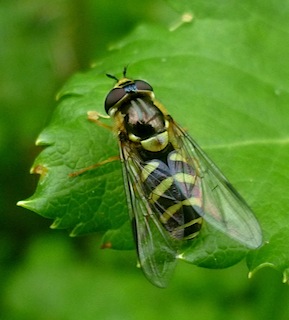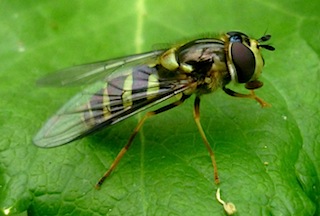 Did you know hoverflies form an important group of pollinators? Read on to find out more about them from local hoverfly enthusiast Andy Pay.
Did you know hoverflies form an important group of pollinators? Read on to find out more about them from local hoverfly enthusiast Andy Pay.
Photo: Andy Pay
HOVERFLIES Q&A
 We automatically think of butterflies and bees when asked to name the best pollinators, but there are other species that are just as important. One group consists of the hoverflies. Here, local hoverfly expert Andy Pay gives us the answers to a few questions about this fascinating group of insects – and also corrects a few misconceptions.
We automatically think of butterflies and bees when asked to name the best pollinators, but there are other species that are just as important. One group consists of the hoverflies. Here, local hoverfly expert Andy Pay gives us the answers to a few questions about this fascinating group of insects – and also corrects a few misconceptions.
Do they bite?
No.
Do they sting?
No.
Well, what do they do?
Amongst other things, they produce lots of larvae which will eat your garden pests.
How can I tell it’s a hoverfly and not a bee or wasp?
If you look closely, you’ll see they have short straight antennae (“feelers”), not long droopy ones. Also, when they settle they tend to remain fairly still or just move around slowly. They don’t rummage around busily like bees and wasps. Unhelpfully, they don’t all hover, whilst many other flies do! Some of them buzz but most are silent.
What makes it a hoverfly then?
Ah, this is where it gets technical….it’s all to do with the distribution of the veins in their wings.
How big are they?
Different species range from just 5 mm to over 2 cm in length.
How many different sorts are there?
Some 283 species have been recorded in the UK, but many of those are very rare. I’ve been looking at them for a few years now and my list is about 70.
Are they easy to identify?
By and large, no. There are some obvious ones (mostly those that resemble bees or wasps) but many need a close look (good photographs often help), whilst others need examination through a microscope. Some can only be identified by microscopically studying their genitalia. I’m not into that.

Author: Andy Pay
Photos: Andy Pay
Published: July 2015
